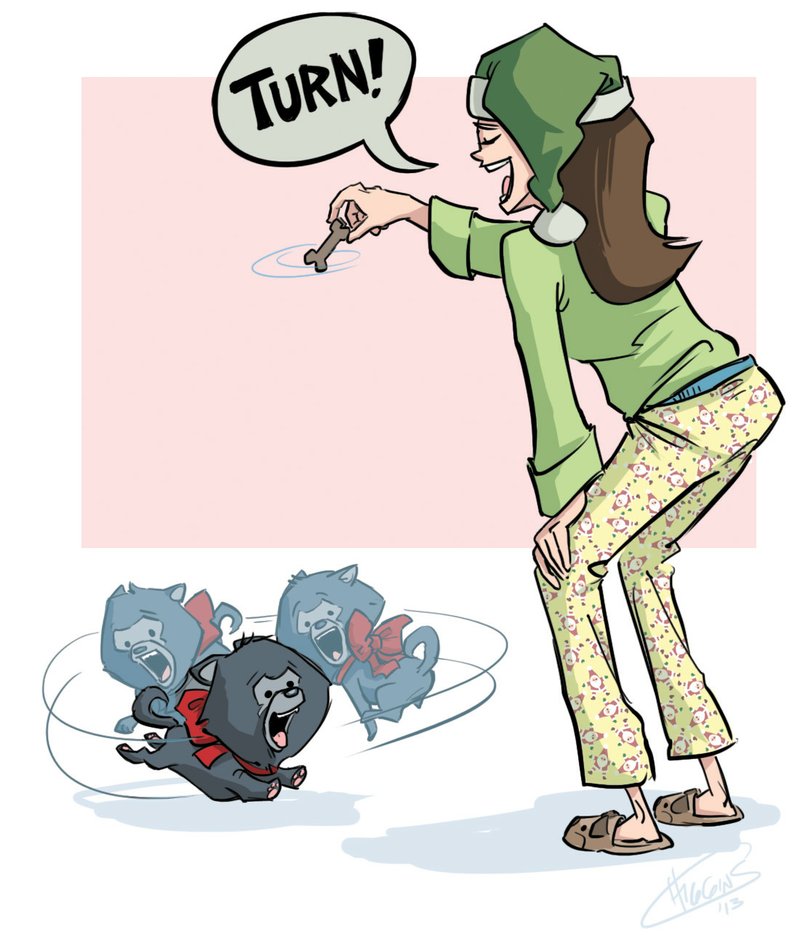When my dog was a puppy, I taught her to spin in a circle on command. Actually, I taught her the cue to spin. Simone spun all on her own when she was excited or wanted attention, which was pretty much all the time.
In a canine obedience class years ago, Little Rock dog trainer Colleen Backus taught me and other dog owners how to put verbal cues to behavior that came naturally to our dogs. It was simply a matter of saying a word or doing a hand signal when a dog, in the normal course of activity, did something such as raise a paw (high five) or stand on its hind legs (up). As noted, Simone is a spinner, so every time she began to turn in a circle (always spun to the right), I said, “Turn” and gave her a treat. After only a few times of being rewarded for spinning, she began to do it on cue. Fun and darn cute.
Next, I added a nonverbal signal, which was a tiny twirl of my right index finger. She picked that up quickly. Now I can simply flick that finger and Simone will spin. If I keep my finger moving, she’ll keep turning. Of course, I can’t overdo it or she’ll get dizzy.
Simone also learned to roll over for a tummy rub, again simply with me adding a verbal command to something she did on her own whenever I sat on the floor with her. When Simone flipped onto her back and showed me her belly, I said, “Scratch scratch scratch” quickly with no pauses between each repetition of the word. Again, it took just a few times for her to associate the cue with the behavior.
The key to the training, Backus said, wasn’t merely learning to cue natural behaviors but to use positive reinforcement when doing so. When Simone spun, she received praise and a treat. If she didn’t spin, nothing happened - absolutely nothing. She was never punished or scolded. By the same principle, she learned to respond to her name when she was just a tiny pup because every time I said “Simone,” there was a party. Not with funny hats and confetti, but with lots of praise and a treat or two. Naturally, she wanted to respond when she heard her name because happiness followed.
You can extend the method of rewarding a dog’s natural tendencies to prompt behavior you want to actions beyond cute tricks. In fact, you can train your dog to act naturally on cue as a step toward getting him to do just the opposite. If you have a yappy dog, you can use his penchant for barking to teach him not to bark. First, you attach a cue to barking. Every time he barks, say his cue (speak or bark) and reward him. When he’s not barking, he gets no reward.
If you’re consistent with the cue and reward - sometimes that’s the hardest part of training - there will come a time when you’ll be able to say the cue and your dog will bark. When he’s barking every time you give him the command, then you can begin teaching him to be quiet. Sounds kind of weird, but it works.
The Humane Society of the United States outlines the steps on its website, hsus.org. First, ask your dog to bark by giving him your cue. After a few barks, stick a treat under his nose. Usually a dog will stop barking the second he smells the treat. That’s your cue to say a word - “quiet” is good as short cues work best -then give him the treat and praise him for his silence. Conduct your no-barking training sessions daily or twice daily in a calm environment with no distractions.
Teaching your dog to be quiet on command isn’t as easy as teaching him to roll over or spin. Getting a barky dog to squelch his natural desire to bark is a big deal. Backus told us that you have to up the ante when asking for extraordinary behaviors by offering a super-special reward. With Simone, I used her “everyday” Bil-Jac treats for things like spinning. When teaching things that were contrary to her energetic Pomeranian nature - sitting still or lying down or being quiet - I gave her bites of cooked chicken. She’ll do almost anything for chicken.
Happy training and Merry Christmas!
Do you have a question about pets? We’ll get you an answer from an authority. Send your question to Rhonda Owen, Arkansas Democrat-Gazette, P.O. Box 2221, Little Rock, Ark. 72203 or e-mail askcreature@att.net
Family, Pages 37 on 12/25/2013
